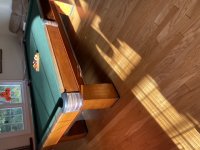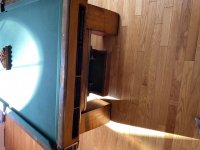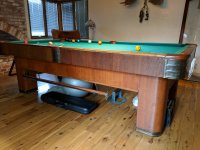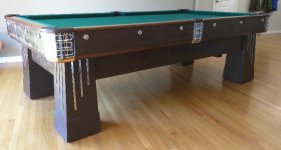Yeah I could be slightly generous with that estimate, but I think these classic tables tend to be undervalued. My family came out of rural Kentucky, where these were in just about every small town room in the area, furthermore my father was a furniture builder, so I can really appreciate the workmanship, and the over engineering that went into these old classics. Many of these old tables used woods that are now extinct, not this particular table, but still something to think about when looking at these old BBC tables. I do think the rail caps on this table were available in either Walnut, or Brazilian Rosewood.
It's probably as much sentimental as anything else for me. Just a lot of memories with these old tables. I see that someone added a molding of some sort to the bottom edge of the frame. This is where customers would tap the butt of the cue on the table to tell the rack boy that the game was over and he would come over with his change belt and collect the coins from the loser and rack em up again. There was no gambling permitted in the Bible Belt, but it was standard rules that the loser always paid, and if there were a few players in a game of rotation it could get expensive for a 10 year old kid in over his head.




